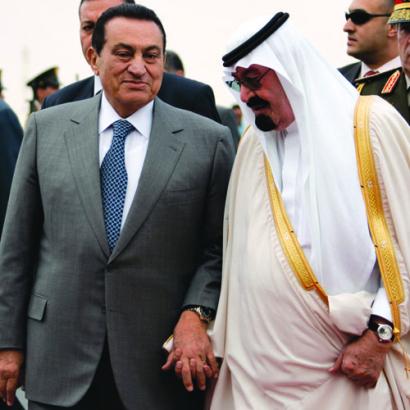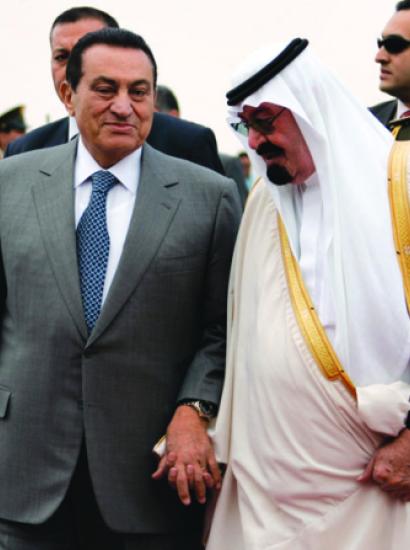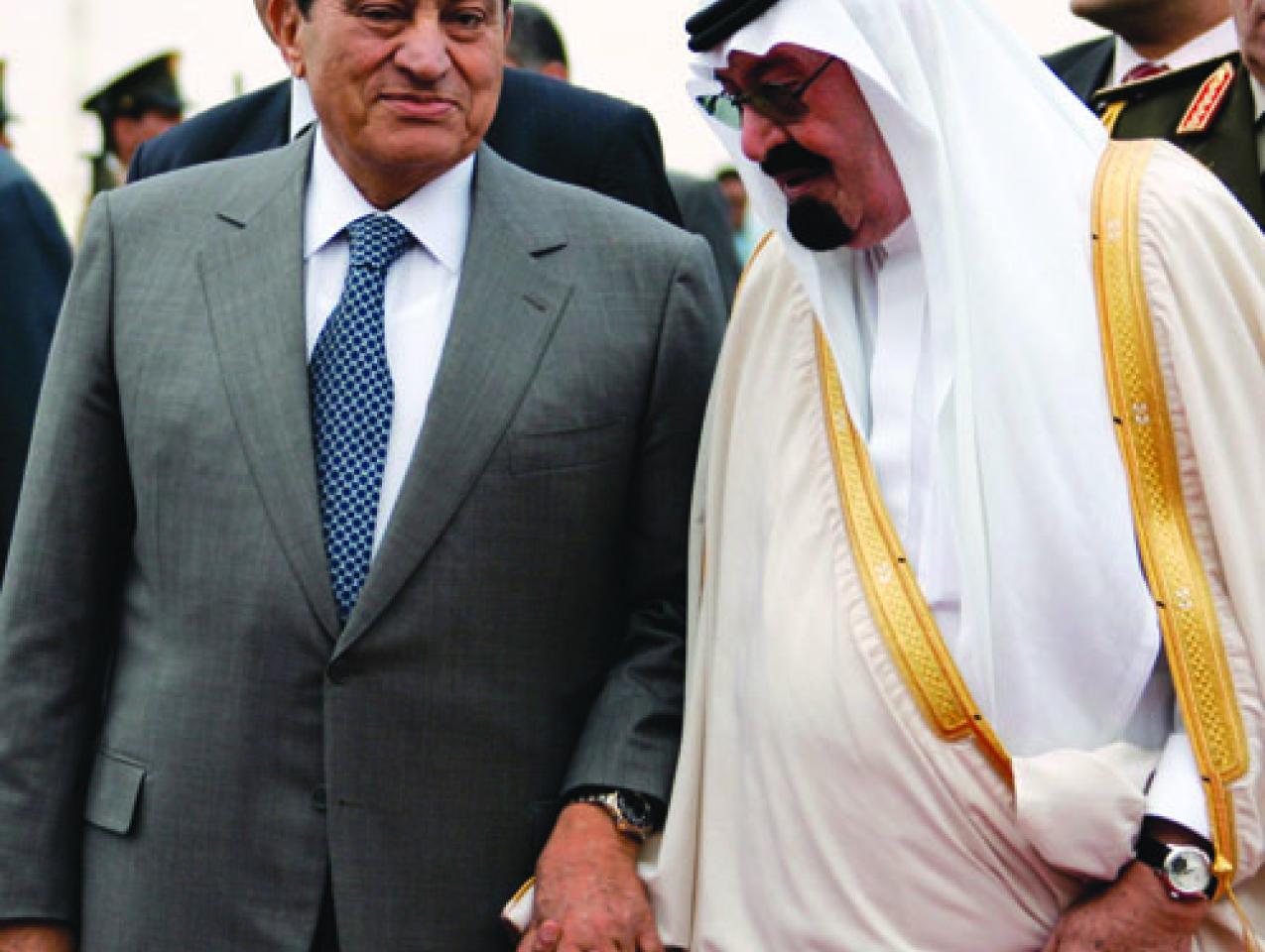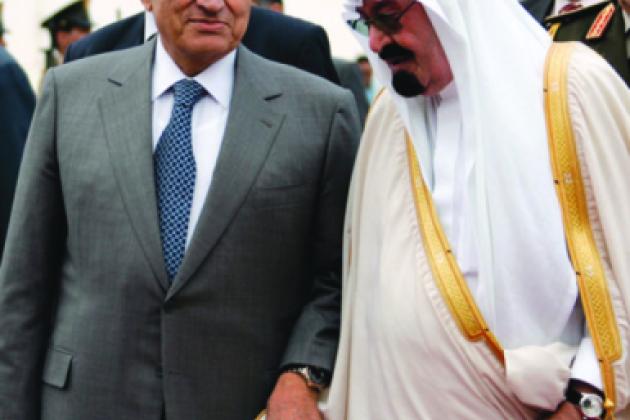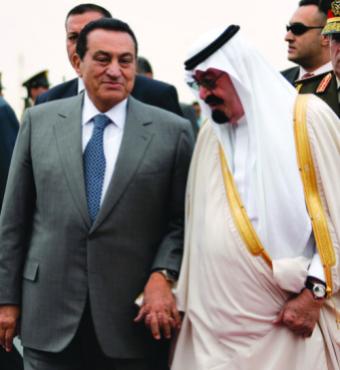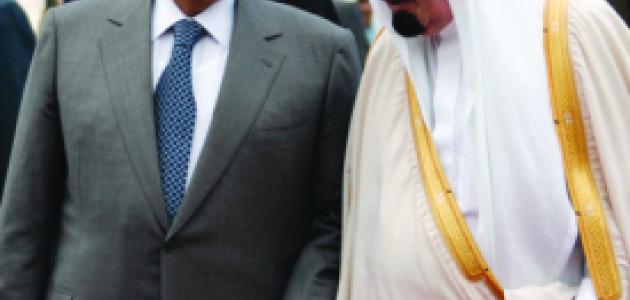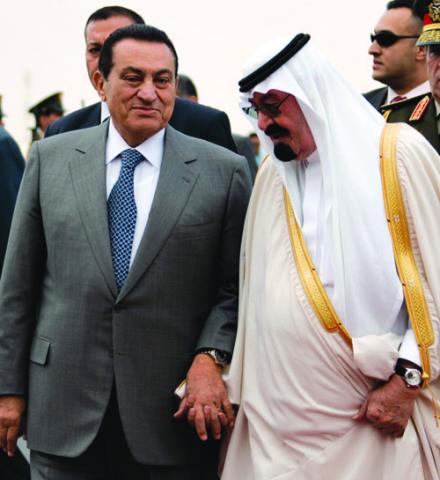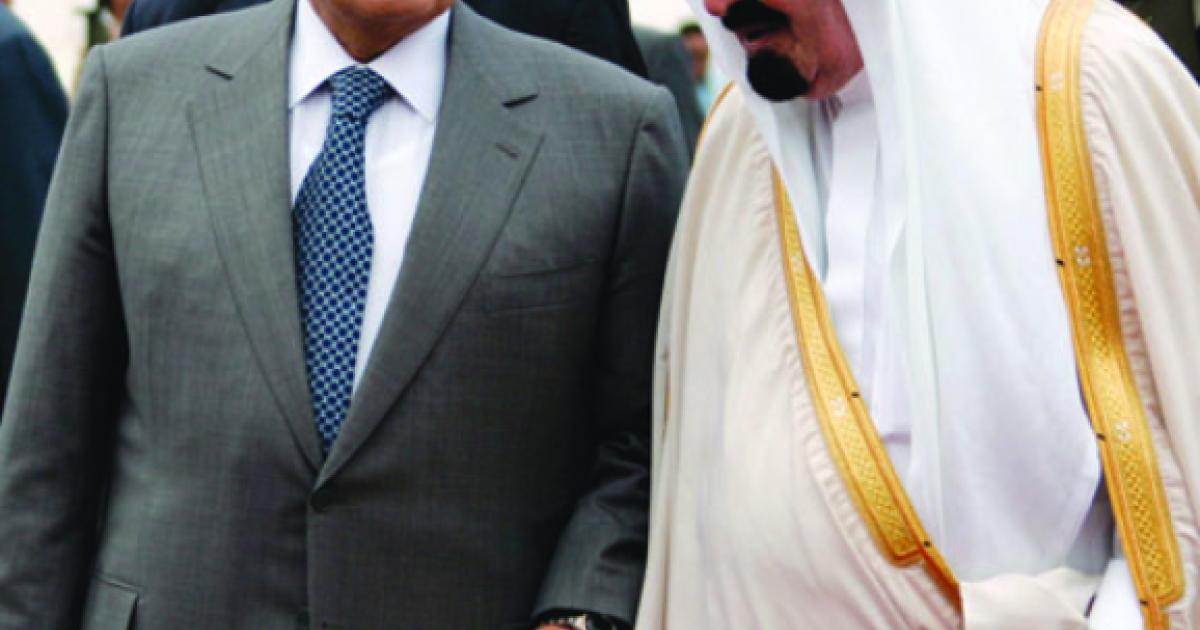- Economics
- Law & Policy
- Regulation & Property Rights
- US Labor Market
- Energy & Environment
- US
- Economic
- Military
- Contemporary
- World
- Security & Defense
- US Defense
- Terrorism
- International Affairs
- US Foreign Policy
- Civil Rights & Race
- History
Among our Arab allies, none is more important than Saudi Arabia, and none is more controversial. The invaluable security partnership, birthed by President Franklin D. Roosevelt and King Abdul-Aziz in 1945, has endured despite a clash of values and cultures. Now, as Arab leaders from Tunisia to Yemen fight, flee, or face unprecedented political pressure, the United States must ask itself whether it can support democratic hopes in Egypt, Tunisia, and Libya while settling for stability in Saudi Arabia. Or should it more forcefully pressure the Saudis on political reform? With its influence, America can promote change. Washington should proceed cautiously, yet deliberately, to inspire meaningful reform in Saudi Arabia to preserve this long-standing partnership and protect U.S. interests in the Middle East.
THE U.S.–SAUDI PARTNERSHIP
The U.S. foray into the Middle East came much later than the British involvement, and in markedly different fashion. Inspired by business rather than colonialism, U.S. entrepreneurs in search of oil entered the Middle East through Saudi Arabia in 1933. A strategic relationship was defined in 1943 when the Roosevelt administration declared that “the defense of Saudi Arabia is vital to the defense of the United States.” Within a few years, what had begun as a business relationship between American industry and the Saudi monarchy evolved into a lasting partnership between governments, built upon economic and military security.
The free flow of Saudi oil to U.S. markets became an essential component to the economic growth of both nations. America enjoyed absolute energy independence in 1950, but the post–World War II U.S. economic boom eventually created demand for more oil than American wells could produce. By 1949, Saudi wells were accounting for slightly more than 5 percent of total world production. This increased the global oil supply and ushered unprecedented wealth into the kingdom. America contributed heavily to the development of Saudi infrastructure, which in turn fueled growth in American industry. Saudi direct investment in U.S. financial markets skyrocketed. In 1974, Saudi Arabia invested almost 20 percent of its oil revenue in the United States; by 1979, the Saudis had accrued the largest single holding of dollars and U.S. government securities. The Saudi government effectively tied its growth to the U.S. economy, and as the economic ties strengthened, a vital security partnership formed alongside it.
Starting in 1942, Allied air forces gained access to air routes across the Arabian Peninsula as well as safe passage for significant wartime resupplies that flowed up the Persian Gulf. In exchange for military access and oil, King Abdul-Aziz looked to the United States to preserve the kingdom’s territorial integrity against the ambitions of Iraq and Jordan in the 1940s and against those of Egypt in the 1950s. The completion of Dhahran air base in 1946 embodied the official U.S. interest in Saudi security.
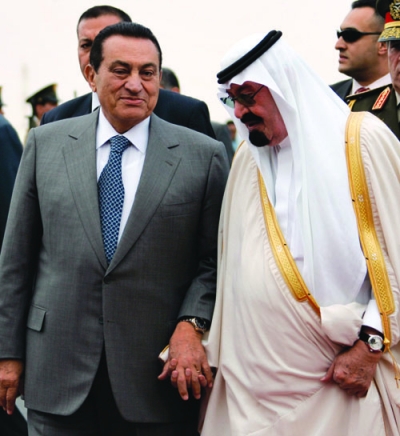
The United States Military and Training Mission (USMTM), established in 1953, is devoted to advising and assisting the Saudi armed forces with military planning, organization, and training methods, and remains the cornerstone of U.S. military relations with Saudi Arabia today. Massive arms purchases in later decades brought F-15 fighter aircraft, highly sensitive airborne warning and control aircraft (AWACS), tanks, and sophisticated weaponry to the kingdom. Protection of the vital oil fields remained a unifying goal, and the United States viewed a more capable Saudi military, one able to fend off regional and domestic threats, as key to attaining it. This mutual interest in military and economic growth powered the relationship for more than fifty years, but it was a shared ideology that made it nearly unbreakable.
In the context of the Cold War, battling the spread of communism throughout the Middle East and beyond became the geostrategic glue that bound Washington and Riyadh for half a century. For decades Saudi Arabia repeatedly joined U.S. efforts to battle the spread of communism in its immediate neighborhood and around the globe. In the Middle East, the two governments worked in concert to stem Soviet influence in Nasser’s Egypt and South Yemen and to weaken the Marxist government in Ethiopia. Farther afield, Saudi financial support bolstered American anti-communist initiatives in Angola and Nicaragua. This collaboration motivated President Reagan to declare in 1985 that the “friendship and cooperation between our governments and peoples are precious jewels whose value we should never underestimate.” He delivered this statement, of course, during a time of peak cooperation in Southwest Asia, when the epic struggle between the Soviets, the Afghan mujahideen, and the Arab jihadists accelerated the end of the Cold War. After Soviet-led communism came to an end, there was a gap in shared ideological purpose. But Saddam Hussein’s invasion of Kuwait, and threatening overtures toward Saudi Arabia in the summer of 1990, filled the void.
In August 1990, just days after Iraq invaded Kuwait, Saudi Arabia’s King Fahd agreed to the deployment of over 500,000 U.S. soldiers on Saudi soil. Saudi support throughout Desert Storm was absolute. In the decade that followed, command, control, and execution of the U.S. mission to secure the southern no-fly zone largely occurred from within the kingdom. This required a much larger footprint of American troops on the peninsula than the traditional Islamic society preferred to accept, and this deeply eroded Saudi domestic support. Fresh from the Afghan struggle, Saudi jihadists condemned their own government for its inability to protect the kingdom and its two holy cities without the sustained presence and aid of a great infidel power. Saudi religious leaders responsible for the export of radical Islam joined the chorus, and much of Saudi society followed suit.
The strength of the domestic pressure was evident in how the royal family greeted the second U.S. invasion of Iraq, twelve years after the first. In August 2002, Crown Prince Abdullah publicly stated his opposition to a U.S. invasion. Forced to walk a fine line between the widespread domestic opposition to the war and his support of the long-standing U.S. security partnership, he privately permitted the presence of nearly ten thousand U.S. military personnel. But by the end of September 2003, aside from a small number of military trainers, not a single U.S. soldier, tank, or plane remained on Saudi soil.
The Saudi government’s cool reception to the second U.S. invasion of Iraq was a telling indicator of how its internal domestic and regional concerns flowed against the currents of the American vision of a post-Saddam Iraq and a greater Middle East. Today, amid revolution in many Arab states, the political realities that prompted Saudi objections in 2003 are still relevant. The Wahhabi clerics and radical elements in Saudi society that most notably influenced the monarchy’s resistance to military invasion in 2003 are positioned to forcibly resist a cultural invasion in 2011. Freedom and modernity are a profound challenge to Wahhabi conservatism. The royal family, whose legitimacy and self-preservation rest heavily on the endorsement of the religious class, treads ever so carefully between the two worlds.
Saudi Arabia is, by tradition, a closed society. The tribal customs of desert nomadic life still dictate many of its cultural norms. Conservative Islam governs the private and public sector, and the strength of the tribal and religious mores acts to repel Western political and social influence. Nonetheless, Saudi Arabia is also a changing society. The youth demographic is disproportionately large: people under thirty account for two-thirds of the population. And yet this educated, connected, and articulate potential workforce is highly unemployed. Many view the Saudi royal family, with nearly seven thousand princes, as corrupt, nepotistic, and highly inefficient. Despite the country’s massive oil wealth, 40 percent of Saudis live in poverty and 70 percent cannot afford a home.
These societal conditions under an authoritarian regime bear striking resemblance to those that have sparked protest and revolution in the Middle East and North Africa. Saudi rulers have so far avoided similar unrest, partly out of society’s reverence for the current monarch, King Abdullah, who has tried to introduce modest reforms, partly because the clerical establishment backs the ruling family, and partly because Saudis fear government reprisals. After the Tunisian and Egyptian revolutions, however, many Saudi intellectuals did appeal to their government for political reforms, calling for a constitution, the rule of law, acknowledgment of human rights (including women’s rights), direct elections, an independent judiciary, and government transparency. Rather than initiate a dialogue to address these concerns, the king imprisoned leading advocates for change. Then he announced massive spending initiatives that create public sector jobs, increase government wages and unemployment benefits, and provide subsidies. These measures are an attempt to buy continued allegiance without making any political sacrifices or reforms. They will not reduce the high level of youth unemployment, nor will they quench the growing thirst for genuine political change.
THE WAY AHEAD
For decades, America accepted the Saudi system and enjoyed the benefits of its strong partnership. It will not be easy to back freedom in Saudi society, putting at risk our close relationship and the security and stability it provides, but the turmoil of 2011 has demonstrated that the old model needs reworking, and soon.
When it became clear that leaders in Egypt, Tunisia, and Libya had lost the loyalty of their populations, American support for those regimes died. As a result, King Abdullah questions the reliability of his security guarantor, and rightly so. America can no longer prescribe freedom as a universal right while turning a blind eye to those who violate it. On the other hand, driving away a long-standing Middle East security partner that sits on one quarter of the world’s oil reserves, amid an unpredictable wave of revolutionary euphoria, isn’t the answer. America must walk this tightrope carefully. It can adhere to its values and support universal freedoms while preserving this vital security partnership. By capitalizing on this time of unrest, it must persuade the Saudi royals that reform suits the regime’s best interest and that meaningful reform, early on, is the best way to obviate a wider social revolutionary movement.
America must convince the Saudi government that its reprieve from regional unrest is ephemeral. The power of social media and information technology to mobilize society will only intensify. Ever-increasing access to information, combined with political stagnation and disenfranchisement, will at some point trigger unrest among the burgeoning, impoverished, unemployed youth. Retention of power can best be accomplished by actively addressing these concerns before tensions overflow. When a regime grants concessions only after a movement gains momentum, dissenters see it as a sign of weakness. Often it only emboldens the movement. Such was the case in Egypt, where President Hosni Mubarak’s promises came too little and too late.
Deliberate dialogue now among the Saudi royal family, the religious conservatives, the intellectuals, and the free-thinking youth can lead to a road map under which change can be introduced gradually, avoiding political upheaval. A civil discussion would help to usher in true reform while preserving many of the religious and tribal norms that Saudis hold dear. But a violent revolution, hijacked by the ultra-religious, could resemble the path of the 1979 Islamic Revolution in Iran.
A controlled transition also would give a voice to those who value the American partnership and aim to protect it. The strong military-to-military relationship, and the Saudi dependence on U.S. military training and weapon systems, can both anchor the diplomatic front and apply leverage for change.
Saudis must understand that America is not interested in imprinting American democracy onto Saudi society, but that when a society stands up for its freedom, the United States will not tolerate violent repression or stand by rulers who have lost the support of their people.
The United States must be resolute, but not obtuse, in its endeavor to promote reform. A heavy-handed approach risks backlash, and we cannot forget the devastating economic effects that Saudi manipulation of oil markets produced during the oil embargo of 1973. Rather, America must pursue a strategy where the Saudi government assumes the leading role. A monarchy viewed as pandering to American interests will lose the backing of the religious class, and political legitimacy will falter. On the other hand, one that leads reform in conjunction with its religious class can introduce sensitive changes that will stem revolutionary fervor yet protect many of its conservative customs. The Saudi government must be convinced that reform is in the kingdom’s best interests, and Washington can help persuade it. A strong relationship based on decades of mutual economic, military, and ideological interests puts America in a unique position to do so.








